Philips.be
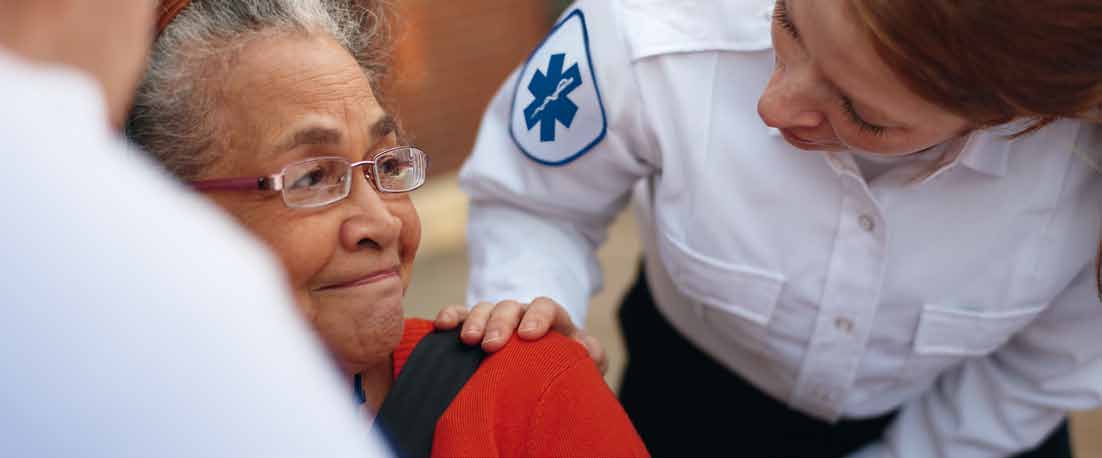
Driven to make a dif erence
People focused. Healthcare simplified.
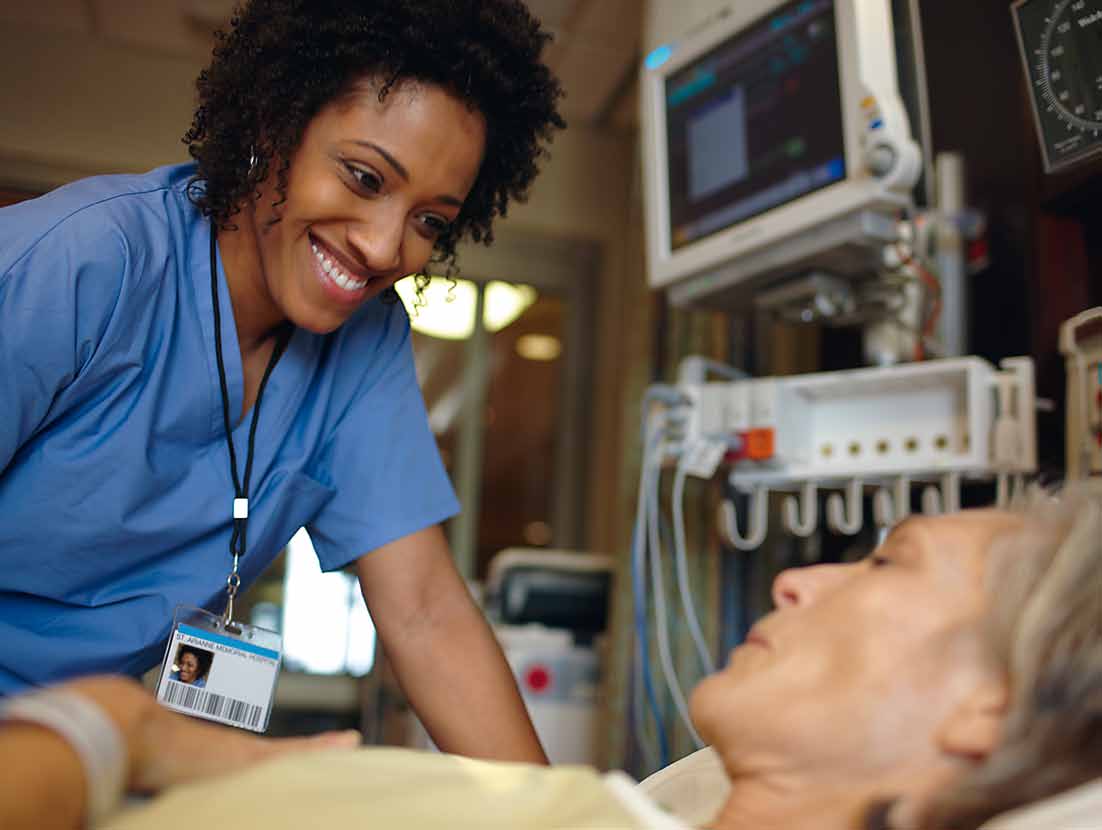

Giving people the best healthcare possible
Patients deserve the best possible care, but they also deserve the best possible experience. We help you give them both.
How? By making your work easier: removing the barriers that hold you back, providing you with advanced, effective and intuitive medical technology, and freeing up the time and energy you need to connect with your col eagues – and, most important of al , your patients.
And because each patient is an individual, we help you treat them as the unique person they are, from prevention or early diagnosis, right through to recovery, monitoring, or long-term disease management. Whether it's in the ambulance, the hospital, the office, or the home.
At the same time, we know you have to work within constraints: affordable, reliable, and sustainable are words we understand.
Care cycle driven
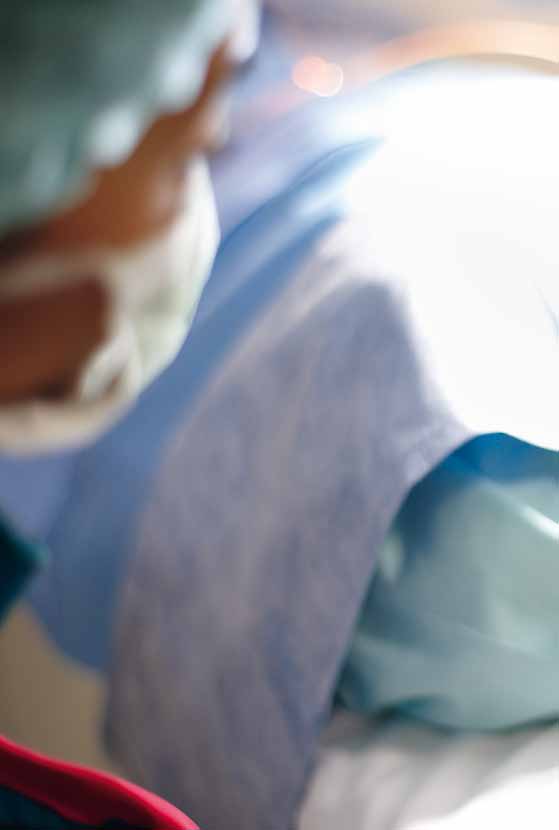
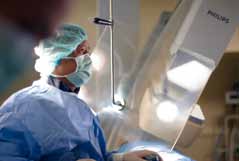

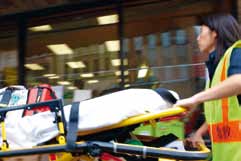
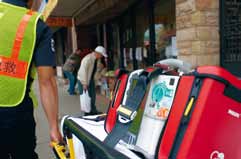
It is simple, really. We want to help save lives.
Automated external defibril ators (AEDs) help emergency responders,
both professionals and everyday people do just that. More than 10 years
ago, Philips was a major catalyst behind the public access defibril ation
movement. Now, more than 500,000 Philips defibril ators have been
distributed to airports, schools, workplaces, and homes worldwide.
Virtually anyone can help save a life
We're getting older
Our latest generation AEDs combine auditory CPR
and sicker
coaching with technology that al ows as little as 10 seconds
• The world population
between the end of CPR and the start of defibril ation,
contains 3.1 bil ion adults
putting the power to save lives in the hands of more people
aged 20-64, and 390 mil ion
in more places. Using clear, calm voice instructions, the
over 65.1 By 2050, 2 bil ion
AEDs coach responders through each step of CPR.
people may be over the age of sixty.2
Changing perspective, making a difference
• Chronic disease, such
A new transesophageal echo is altering the course of
as heart disease, stroke,
heart surgery with real-time, 3D images of the heart
cancer, chronic respiratory
in motion. Surgeons and anesthesiologists can see the
diseases and diabetes,
complete valve from multiple perspectives, while it's
cause 60% of all deaths
beating, so they can create a comprehensive surgical
plan before the first incision.
• More than 15 mil ion
adults aged 20-64 die every year. Most of these deaths are premature and preventable.4
Focused on the human side of healthcare
Imagine breaking down the barriers that make visiting the hospital an
Ultrasounds as good for clinicians as they are for patients
We expect better
intimidating experience for patients, while creating a more pleasant
Environmental factors affect clinicians, too. So we teamed with leading
care choices
work environment for staff. Imagine harnessing technology to enhance
ergonomic consultants and equipment providers around the world to
• The number of general
patient comfort and understanding, while providing each patient a
design ultrasound suites that diminish the work-related pain experienced
practitioners in Spain,
personalized experience that eases anxiety. We imagined, and the
by more than 80% of sonographers.
Germany, France, Italy and
result was Ambient Experience.
the UK remained virtual y
Our latest ultrasounds introduce maneuverable parts and adaptable
unchanged between 1994
Patients can personalize the exam environment
workstation positioning, so sonographers can work in natural postures.
and 2004. The number
Based on years of clinical design research, Ambient Experience combines
Plus, the machines incorporate voice recognition technology to al ow
of specialists grew from
projection, lighting, music, and architectural elements to support the
hands-free system control, significantly reducing keystrokes. These
384,000 to 479,000 – a rise
patient's physical and emotional comfort. Patients have the opportunity to
ergonomic innovations let clinicians bring more of their skil s to the
personalize the exam environment, giving them a sense of control, helping
patient rather than the technology.
• In 2007, an estimated
to relieve apprehension. A more relaxed patient can make acquiring images
750,000 Americans
easier, which can produce better results and often uses less sedation.
traveled abroad for medical care, a number anticipated to increase to 6 mil ion by 2010. Some Europeans, with long waits on elective procedures, head to Asia and the Caribbean.6
• U.S. women make up to
90% of the healthcare decisions in their families – from children to grandparents. They are savvy, discriminating customers.7
Simplicity across the continuum of care
We need more care
Looking at the entire continuum of care
When she returns home, Philips' Telehealth solutions al ow the patient's
At Philips, healthcare is human-care. Every clinical innovation begins with
physician to remotely monitor her vital signs to make timely care decisions.
• According to the World
the experiences of the people involved so we can improve the way patients
Health Organization, the
receive care and support the clinicians who deliver it. We work hard to
Breast cancer care as unique as the women it serves
world is short more than 4
reach these goals, not just in diagnostic situations, not just in critical care
Because breast cancer presents differently in different women, new studies
mil ion health workers.8
settings, but throughout the entire continuum of care.
and guidelines suggest a multimodality approach to support early detection,
• Low and middle-income
comprehensive diagnosis and better patient management throughout
countries carry more
From prevention to screening to diagnosis, from treatment to management the breast cancer care cycle. Our advanced imaging solutions include
than 90% of the world's
to surveil ance, gaining a deeper understanding of diseases in all their stages mammography*, ultrasound, MR and PET/CT and enable efficient, cost-
disease burden but account
can lead to real opportunities to respond with meaningful solutions for
effective breast cancer screening, diagnosis, treatment and management.
for only 11% of health
both patients and providers. Before a condition starts, and after it happens.
A holistic approach to oncology
• Developing nations spend
With you every step of the way
We're also focused on researching and developing programs in colorectal,
$500 mil ion each year to
A 76-year-old woman is home alone when she begins to experience pain
liver and prostate cancers, including moving image guidance beyond the realm
educate healthworkers
and pressure in her chest, so she presses the button on her Philips Lifeline
of diagnosis and giving physicians an extra pair of eyes in intervention and
who leave to work in
pendant, connecting her to a trained response associate, who assesses the
therapy, helping diminish the risks of healing while achieving better outcomes.
North America, Western
situation and sends help immediately.
Europe, and South Asia.10
Effective cancer treatment coordinates a complex network of physicians, data,
• Africa has 24% of the
Emergency responders save her valuable time with the Philips HeartStart
and caregivers. By integrating advanced imaging technology with the ability
world's disease, just 3% of
MRx monitor/defibril ator, which al ows the door-to-bal oon process to
to streamline critical information, our products give healthcare providers the
the world's health workers,
begin before she arrives at the hospital. It relays her ECG wirelessly, so the tools they need to support the whole person, not just the cancer.
and less than 1% of the
hospital team can begin organizing its resources, dramatical y reducing the
world healthcare budget.11
time to treatment.
*Not available in the U.S.
Or they could divert her to a specialized hospital so this frightened woman can bypass the emergency department and go straight to the cardiac catheterization lab for angioplasty. There, Philips' integrated approach has simplified workflow so clinicians can focus on the patient experience and clinical outcomes.
where it's neededPeople are getting older and the healthcare system is overburdened and costs are unsustainable. Health systems cannot simply scale the current model of care to improve quality and meet the needs of an increasing number of patients. The only option is to redesign the way critical care is managed.
Bringing care out of hospitals and into the hands of patients and their support systems reduces costs and the pressure on clinical resources while improving patients' lives.
Live independently at home
Rising costs are
• In the U.S., patients on a Coumadin regimen must be careful y monitored.
Now, instead of going to the lab every 4-6 weeks, patients can use Philips
• Based on projected
weekly self-testing service from wherever they are.
population growth
• Philips' SleepEasy system improves CPAP compliance for patients with
rates, global spending on
sleep apnea in a sleeker, more natural design.
healthcare will increase to
• The Philips Medication Dispensing Service, complete with monitoring and
€8 tril ion by 2050.12
alerts, may al ow people to live more independently.
• Every 30 seconds in the
United States, someone
Care starts immediately
files for bankruptcy in the
Continuing to lead the way in emergency care solutions for EMS teams,
aftermath of a serious
we've designed a completely open CPAP system that provides continuous
health problem.13
positive pressure in an economical solution. This non-invasive approach
• India and China, home
helps clinicians decrease intubation rates, risk of infection, and hospital
to more than 1/3 of the
length of stay. It provides rapid improvement in oxygenation without the
world population, have
costs and complications of intubation, even before the patient arrives at
undeveloped public
the hospital.
healthcare systems. More expensive private care is
Bringing care to the patients who need it most
shifting the cost to those
We are breaking down the barriers to care all over the world. Since 1993,
who can least afford it.14
Philips has been advancing the healthcare systems in emerging markets like India, Jordan, and the Philippines. In the central African nation of Zambia, Philips has worked in partnership with the Dutch and Zambian governments to make healthcare accessible for al , including updating medical and dental equipment in 71 hospitals.
Innovation for health's sake
Modern medicine generates an astounding amount of data for every
Technology is
patient. Our solutions gather, analyze and present information in a way
that enables decision-making support whenever and wherever it's needed.
• Longevity medicine
By streamlining workflow and refining processes, we reduce the burden
continues to postpone aging
on caregivers and give them more time for more patients.
and promote health. Within 10 years, living beyond 100
Putting heads together
will be common, and by
ICUs in the U.S. need 20,000 to 30,000 intensivists, but only 6,000 are in
2025, the norm.17
active practice15, a gap that will increase as the elderly population grows.
• More and more healthcare
While the majority of care is delivered at the bedside, centralizing certain
consumers are liberated
activities can dramatical y increase efficiency and reliability. Our eICU
from age constraints. 68%
model brings together a group of physicians and nurse specialists who can
of baby boomers say they
be "virtual y" at any bedside 24/7. Mortality has decreased by 20-30%.16
will be more vigorous
Case margins have increased by 56%. Now that's a meaningful innovation.
and engaged than their parents were at the same
Seeing with new eyes
age, while healthy lifestyles
Philips' vanguard imaging solutions al ow physicians to use procedures that
appeal to even the youngest
are more precise and less invasive. We offer a range of nuclear medicine
imaging systems, including state-of-the art Precedence SPECT/CT, versatile
• By 2030, new organs,
BrightView SPECT, and GEMINI PET/CT. The hybrid systems combine
including hearts and lungs,
functional and anatomical information in a single scan.
may be available from stem cel s, while DNA mapping
Targeting a stealthy foe
radical y changes the way
Symptoms of sepsis can vary widely and appear similar to many other
medicine is practiced.19
conditions, making late diagnosis a common occurrence. ProtocolWatch simplifies sepsis care, continual y checking monitoring data against care protocol criteria to help provide clarity when it matters most. Whenever screening criteria for sepsis are met, ProtocolWatch prompts clinicians for the proper tests, observations, or interventions.
Giving people the best
healthcare possibleIt's your mission. It's our mission too.
We're dedicated to understanding the chal enges you face – and helping you overcome those chal enges. Every day.
We strive to improve the quality of people's lives and continue raising the bar on clinical excel ence at lower cost.
Because simplifying healthcare means improving healthcare for people, everywhere. Every day.
People focused. Healthcare simplified.
Our depth of focus, our breadth of solutions
Services
Site Planning & Project Management Ambient Experience Education Services
Performance Services Managed Services Equipment Maintenance Financing
Healthcare Informatics
Cardiology Interventional X-ray labs, CT, MR, SPECT, SPECT/CT, Home Cardiac,
Monitoring, Ultrasound, Cardiac Resuscitation, ECG Solutions, Maternal & Perinatal
Monitoring Solutions, Patient Monitoring Systems, Medical Supplies
Women's Health Mammography, Ultrasound, MR, PET/CT, Breast Specific Integrated
Information Management
Oncology General X-ray, CT, MR, PET/CT, Ultrasound, Patient Monitoring Systems,
Medical Supplies
Home Healthcare Home Monitoring, Respiratory Care, Sleep Disorders, Senior Living
Acute Care Interventional X-ray labs, CT, MR, SPECT, SPECT/CT, PET/CT, Ultrasound,
Medical Alert Services, Home Respiratory, Ventilation, Cardiac Resuscitation, Maternal &
Perinatal Monitoring Solutions, Patient Monitoring Systems, Medical Supplies
Radiology Interventional X-ray labs, General X-ray, CT, MR, SPECT, SPECT/CT, PET/CT,
Ultrasound, Patient Monitoring Systems, Medical Supplies
Pediatrics Interventional X-ray labs, General X-ray, CT, MR, Ultrasound, Patient
Monitoring Systems, Children's Medical Ventures, Medical Supplies
Orthopedics General X-ray, MR, SPECT, SPECT/CT, Ultrasound
For more product information visit: www.philips.com/healthcareproducts
For our mobile application go to: http://m.philips.com/healthcare
Learn more about how Philips is simplifying healthcare:
Philips Healthcare is part of
Royal Philips Electronics
1. WHO online, World health report
7. Loma Linda University Medical
13. National Coalition on Health
1998 press kit, <http:/ www.who.int/
Center, "Women's Health Conference
Care, "Facts on the Cost of Health
at Loma Linda," Lomalindahealth.org,
Insurance and Health Care, NCHC
index.html> (09 September 2008).
22 July 2008, <http://lomalindahealth.
online, < http://www.nchc.org/facts/
cost.shtml> (09 September 2008).
2. Xavier Bosch, "Two bil ion people
older than 60 years by 2050, warns UN
14. Alvin Powel , "In China, India, health
(09 September 2008).
Secretary General," The Lancet 359,
care burden shift to poor," Harvard
no. 9314, 13 April 2002, <http:/ www.
8. World Health Organization, "The
University Gazette online, 12 October
global shortage of health workers and
2006, <http://www.hno. harvard.edu/
PI S0140673602083307/abstract>
its impact," WHO online, April 2006,
+49 7031 463 2254
(09 September 2008).
html> (09 September 2008).
3. World Health Organization, "Chronic
15. Angus DC, Kel ey MA, Schmitz
(09 September 2008).
Europe, Middle East, Africa
Diseases," WHO online, 2005,
RJ, et al. Current and projected
9. World Watch Institute, "State of
workforce requirements for care
+49 7031 463 2254
disease/en/>(09 September 2008).
the World 2005 Trends and Facts -
of the critical y ill and patients with
Containing Infectious Disease,"
pulmonary disease: can we meet the
4. World Health Organization, "50
requirements of an aging population?
Facts: Global health situation and
node/68> (09 September 2008).
JAMA 2000; 284:2762-2770
trends 1955-2025," WHO online,
World health report 1998 press kit,
10. Journal of the American Medical
16. PR Newswire, "Data from 185,000
Association, "Global Shortage of
ICU admissions show significant
Health Workers, Brain Drain Stress
reductions in mortality," < http://
(09 September 2008).
Developing Countries," Vol. 298
No. 16, October 24/31, 2007, JAMA
visicu/33159/> (20 May 2008)
5. Boston Consulting Group,
online < http://jama.ama-assn.org/cgi/
800 285 5585 (toll free, US only)
"Healthcare Regulation Across
17. Canton, James. The Extreme Future:
content/ful /298/16/1853>
Europe - From Funding Crisis to
The top trends that will reshape the
(09 September 2008).
Productivity Imperative," BCG online,
world in the next 20 years. New York:
11. World Health Organization, "The
Penguin, 2006. p. 22.
global shortage of health workers
18. Yankelovich Monitor 2007
and its impact," WHO online,
(09 September 2008).
April 2006, < http://www.who.int/
19. Canton, James. The Extreme Future:
The top trends that will reshape the
6. Deloitte LLP, "Medical Tourism:
(09 September 2008).
world in the next 20 years. New York:
Emerging Phenomenon in Health
Penguin, 2006. p.136.
Care Industry," Medical Tourism:
12. Philips and the Economist Intel igence
Consumers in Search of Value, 3
Unit, "The future of care,"
September 2008, <http://www.
Philips, 2007.
2010 Koninklijke Philips Electronics N.V.
All rights are reserved.
Philips Healthcare reserves the right to make changes in specifications and/or to discontinue any product at any time without notice or
obligation and will not be liable for any consequences resulting from the use of this publication.
Printed in The Netherlands.
4522 962 58821 * AUG 2010
Source: http://www.philips.be/b-dam/b2bhc/us/whitepapers/healthcare-experience-solutions/Philips%20Healthcare%20Corporate%20Brochure.pdf
Acute Pancreatitis: • differentiate between categories of acute pancreatitis • list the most common etiologic factors for acute pancreatitis • differentiate between new and old management concepts of acute Robin Donohoe Dennison, DNP, copyright Robin Donohoe Dennison 2015 • Mild (previously referred to as • Severe (previously referred to as Acute Pancreatitis
Pain Physician 2007; 10: 285-290• ISSN 1533-3159 Case Report Palliative Radiation Therapy of Symptomatic Recurrent Bladder Cancer Sun K. Yi1, Mark Yoder2, Ken Zaner2, MD, PhD, and Ariel E. Hirsch1, MD Background: Palliative radiation therapy (RT) is an established tool in the management of symptoms caused by malignancies. RT is effective at palliating both locally advanced and met-astatic cancer, including related symptoms of pain, bleeding, or obstruction. Most data on pal-liative RT is in regard to its use in the treatment of painful bone metastases. There are also data that support RT palliation for locally advanced or recurrent rectal, prostate, and gynecological








